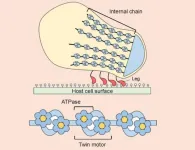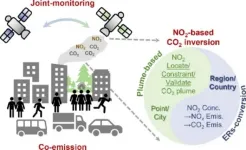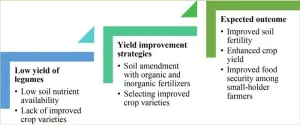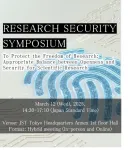(Press-News.org) LONDON, UK, 4 March 2025 - In a comprehensive Genomic Press Viewpoint (review) article, researchers are shining a spotlight on a revolutionary approach to tackling neuroendocrine tumours (NETs), a rare but increasingly prevalent form of cancer. Published in Brain Medicine today, a peer-reviewed article titled "Alpha particle therapy for neuroendocrine tumours: A focused review" explores how targeted alpha therapy (TAT) could redefine treatment for patients where surgery is not an option. Authored by Dr. Kalyan M Shekhda, Dr. Shaunak Navalkissoor, and Emeritus Professor Ashley B Grossman, this work dives deep into the science behind TAT, its early successes, and the hurdles still ahead.
Since neuroendocrine cells were first identified over 150 years ago, NETs have posed a unique challenge to medical science. With complete tumour removal as the only cure, the rising incidence of NETs has fuelled a quest for innovative therapies. Peptide receptor radionuclide therapy (PRRT), which pairs radioactive particles with molecules like octreotide to target cancer cells. While beta-particle emitters like 177Lu-DOTATATE (Lutathera) have become standard as highly effective and well-tolerated therapy, their limitations---namely relapse within a few years---have spurred interest in alpha particles. Why? Alpha particles pack a punch: they deliver high-energy bursts over a short range, shredding tumour DNA while sparing healthy tissue. Alpha particles are also more effective in hypoxic tumour micro-environments: a mechanism by which tumour cells can develop resistance to chemotherapy and conventional radiotherapy.
The Science of Precision
The Viewpoint review unpacks the physics and biology driving TAT's potential. Alpha particles, with their high linear energy transfer (LET), cause irreparable double-strand DNA breaks---far more lethal to cancer cells than the single-strand nicks from beta particles. Dr.
Shekhda explains, "Alpha particles are like surgical strikes---short-range, high-impact, and devastating to tumours, even in low-oxygen environments where other therapies falter." Studies show their relative biological effectiveness outstrips beta emitters, raising a tantalizing question: could TAT turn the tide for patients with resistant NETs?
Dr. Navalkissoor, co-author and nuclear medicine specialist at Royal Free Hospital, adds, "What makes targeted alpha therapy particularly exciting is its potential as a precision tool for patients who have exhausted conventional treatment options. From our clinical experience, we're seeing that alpha particles can overcome resistance mechanisms that limit traditional therapies. The highly localized nature of alpha radiation means we can deliver potent treatment directly to tumour cells while minimizing collateral damage to healthy tissues."
Preclinical trials in animal models have been promising. Experiments with alpha-emitters like 225Ac-DOTATATE and 212Pb-DOTAMTATE in mice and rats delayed tumour growth with minimal toxicity to kidneys or bone marrow. Clinical studies, while still very preliminary, echo this optimism. A phase I trial of 212Pb-DOTAMTATE reported an 80% disease control rate in PRRT-naïve patients, earning it a coveted FDA Breakthrough Therapy Designation. Meanwhile, 225Ac-DOTATATE has shown a disease control rate nearing 90% in some cohorts with progressive NETs. But how do these early wins translate to long-term outcomes? Future trials will explore the longer-term effects of these therapies, and their possible adverse events, although to date any untoward effects seem to be uncommon and possibly no greater than with conventional PRRT.
A Festschrift for a Living Legend
This article is published as part of a special Festschrift commemorating the centennial of Dr. Seymour Reichlin, a titan of neuroendocrinology who was born in 1924. Dr. Reichlin's pioneering work on the regulation of neuroendocrine cells in the pituitary, and then later on
neuroendocrine-immune interactions, laid the groundwork for modern theranostics –therapies like TAT that blend diagnostics and treatment. Now 100 years old and still cognitively sharp, Dr. Reichlin remains a living legend whose mentorship shaped generations of researchers. His curiosity was sparked by personal tragedy – losing his sister to a pancreatic endocrine tumour – and fuelled his breakthroughs, from hypothalamic control of the pituitary to identifying hormone-releasing factors. This review's focus on NETs resonates with his legacy, asking: how might TAT build on his foundational insights to tackle endocrine cancers?
Challenges on the Horizon
Despite its promise, TAT is not without obstacles. Alpha-emitters like 213Bi decay rapidly, complicating production and delivery, and alpha emitters like 213Bi and 225Ac can be complex to source. Regulatory hurdles, high costs, and the need for precise dosimetry – measuring radiation doses to organs---pose further challenges. Yet, solutions are emerging. Companies are developing 212Pb generators, and advanced microdosimetry techniques could refine safety profiles. Professor Grossman notes, "We're at a tipping point. The technology is here, but scaling it sustainably is the next frontier." Could international collaboration or eco-friendly production methods unlock TAT's full potential?
Toxicity remains a concern, though rare. A meta-analysis pegs severe side effects at just 2-3%, but long-term data are scarce. Kidneys, vulnerable to alpha particles' intense energy, may prove a limiting factor. Researchers are exploring enhancers like chemotherapy or PARP inhibitors to boost TAT's efficacy---raising another question: could combination therapies amplify its impact without compromising safety?
Why This Matters Now
NETs, though rare, are on the rise, and TAT offers a lifeline where beta therapies fall short e.g. when tumours have developed resistance. Ongoing trials, like the ACTION-1 study of 225Ac-DOTATATE, are set to compare it against standard care, with results due in coming years. This is a story of innovation teetering on the edge of breakthrough. What will it take to bring TAT from niche trials to widespread use? And how might it reshape our approach to other cancers?
The peer-reviewed article, "Alpha particle therapy for neuroendocrine tumours: A focused review," is a testament to both cutting-edge science and Dr. Reichlin's enduring influence –
a convergence of past inspiration and future hope. It appears online on 4 March 2025 in Brain Medicine (Genomic Press), where it is freely accessible at https://doi.org/10.61373/bm025v.0023.
About Brain Medicine: Brain Medicine (ISSN: 2997-2639) is a peer-reviewed medical research journal published by Genomic Press, New York. Brain Medicine is a new home for the cross-disciplinary pathway from innovation in fundamental neuroscience to translational initiatives in brain medicine. It champions rigorous science with real-world impact. The journal's scope includes the underlying science, causes, outcomes, treatments, and societal impact of brain disorders across all clinical disciplines and their interface.
END
Alpha particle therapy emerges as a potent weapon against neuroendocrine tumours
Targeted alpha therapy shows promise for treating resistant NETs, advancing cancer care
2025-03-04
ELSE PRESS RELEASES FROM THIS DATE:
Neuroscience beyond boundaries: Dr. Melissa Perreault bridges Indigenous knowledge and brain science
2025-03-04
GUELPH, Ontario, Canada, 4 March 2025 – In an exclusive Genomic Press Interview, Dr. Melissa Perreault reveals how her research is reshaping neuroscience by merging cutting-edge science with Indigenous knowledge. As a professor in the Department of Biomedical Sciences at the University of Guelph and a member of the Royal Society of Canada, Dr. Perreault’s work spans neurobiology, ethical research practices, and the therapeutic potential of psychedelics—all while championing Indigenous representation in STEM.
Raised in a low-income, single-parent household, she was the first in her family to attend university. As she navigated academia, she encountered ...
Giant clone of seaweed in the Baltic Sea
2025-03-04
Researchers at the University of Gothenburg have discovered that what was previously thought to be a unique seaweed species of bladderwrack for the Baltic Sea is in fact a giant clone of common bladderwrack, perhaps the world's largest clone overall. The discovery has implications for predicting the future of seaweed in a changing ocean.
In the brakish waters of the Baltic Sea, bladderwrack is the dominant seaweed species as it is one of the few seaweed species that can tolerate low salinity.
The ...
Motion capture: In world 1st, M. mobile’s motility apparatus clarified
2025-03-04
Mycoplasmas, including bacteria that cause pneumonia in humans, are generally nonmotile, but Mycoplasma mobile, as the species name suggests, has been found in the gills of fish and seems to move by gliding along surfaces. The molecular structure that allows it to do so has for the first time been uncovered by a collaborative research group led by Osaka Metropolitan University Professor Makoto Miyata of the Graduate School of Science.
The OMU-led research team has been working since 1997 to clarify M. mobile’s motility mechanisms. ...
One-third of older Canadians at nutritional risk, study finds
2025-03-04
One-third of Canadian adults aged 55 or older are nutritionally at risk, potentially leading to increased hospital stays, more emergency visits and physician consultations for possible infections, a new study found.
The University of Waterloo researchers assessed data from more than 22,000 community-dwelling adults aged 55 and over from the Canadian Longitudinal Study on Aging. After an initial evaluation, they followed up with participants up to three years later to track their health-service use over the previous year.
Researchers used the SCREEN-8 tool (Seniors ...
Enhancing climate action: satellite insights into fossil fuel CO2 emissions
2025-03-04
Reliable and accurate monitoring of CO2 emissions is a cornerstone of effective climate change mitigation strategies. While traditional methods largely depend on ground-based measurements and bottom-up inventories, these approaches are often resource-intensive and prone to errors. Satellite Technology has emerged as a promising alternative, but the challenge remains in distinguishing anthropogenic emissions from natural processes. The long atmospheric lifetime of CO2 makes it difficult to pinpoint localized sources of emissions and track changes over time. Additionally, natural emissions and background concentrations ...
Operating a virtual teaching and research section as an open source community: Practice and experience
2025-03-04
The teaching and research section is the fundamental organizational unit for teaching and research in a university, and the virtual teaching and research section (VTRS) is a crucial exploration for the digital transformation of new basic teaching organization construction in the information age. However, this new type of organization transcends university and spatial boundaries, and motivating participants and sustaining their engagement is a key challenge in VTRS operation. The VTRS for database courses (VTRS-DB) proposes an open community-based operating model, founded on the core concepts of "openness, dedication, competition, and orderliness." ...
Lack of medical oxygen affects millions
2025-03-04
Six out of every ten people globally lack access to safe medical oxygen, resulting in hundreds of thousands of preventable deaths each year and reducing quality of life for millions more, an international report co-authored by the University of Auckland has found.
Associate Professor Stephen Howie from the University’s Faculty of Medical and Health Sciences (FMHS) was an adviser to the Lancet Global Health Commission on Medical Oxygen Security and co-author of its report Reducing global inequities in medical oxygen access released 18 February.
A key finding shows global access to medical oxygen is highly inequitable. Five billion ...
Business School celebrates triple crown
2025-03-04
In a crowning achievement, the University of Auckland Business School is one of the best in the world, successfully gaining triple crown accreditation - a mark of excellence held by only one percent of business schools globally.
The Business School was the first in Australasia to attain triple crown status in 2004, a recognition it has maintained for two decades.
Triple crown status is achieved if a business school can meet the strict requirements of three international accreditation bodies – the Association to Advance ...
Can Rhizobium + low P increase the yield of common bean in Ethiopia?
2025-03-04
Common bean (Phaseolus vulgaris) is a leguminous plant that can form a symbiotic relationship with rhizobia in the soil. Rhizobia convert nitrogen in the atmosphere into ammonia, providing nitrogen nutrition for leguminous plants. However, due to the low effectiveness of rhizobia in the soil, common bean has one of the lowest nitrogen fixation efficiencies among food legumes. Some studies have shown that pre-inoculating common bean seeds with elite rhizobial strains can enhance nitrogen fixation, thereby promoting the plant growth of common bean and increasing the grain yield. As one of the most important food legumes in Ethiopia, the grain yield of common bean is quite low, because of the lack ...
Research Security Symposium on March 12
2025-03-04
In recent years, with the increasing openness and internationalization of research, the risks of inappropriate exploiting openness of research have become more apparent. With the growing importance of research security, the issue of how to safely promote cutting-edge research and international collaboration while respecting research freedom is becoming more important in many countries.
The Japan Science and Technology Agency (JST) organizes the symposium aiming to create an opportunity to deepen discussion on efforts necessary to protect research freedom. The symposium will consist of ...
LAST 30 PRESS RELEASES:
What causes some people’s gut microbes to produce high alcohol levels?
Global study reveals widespread burning of plastic for heating and cooking
MIT study shows pills that communicate from the stomach could improve medication adherence
Searching for the centromere: diversity in pathways key for cell division
Behind nature’s blueprints
Researchers search for why some people’s gut microbes produce high alcohol levels
Researchers find promising new way to boost the immune response to cancer
Coffee as a staining agent substitute in electron microscopy
Revealing the diversity of olfactory receptors in hagfish and its implications for early vertebrate evolution
Development of an ultrasonic sensor capable of cuffless, non-invasive blood pressure measurement
Longer treatment with medications for opioid use disorder is associated with greater probability of survival
Strategy over morality can help conservation campaigns reduce ivory demand, research shows
Rising temperatures reshape microbial carbon cycling during animal carcass decomposition in water
Achieving ultra-low-power explosive jumps via locust bio-hybrid muscle actuators
Plant-derived phenolic acids revive the power of tetracycline against drug-resistant bacteria
Cooperation: A costly affair in bacterial social behaviour?
Viruses in wastewater: Silent drivers of pollution removal and antibiotic resistance
Sub-iethal water disinfection may accelerate the spread of antibiotic resistance
Three in four new Australian moms struggle with body image
Post-stroke injection protects the brain in preclinical study
Cardiovascular risk score predicts multiple eye diseases
Health: estimated one in ten British adults used or interested in GLP-1 medications for weight loss
Exercise to treat depression yields similar results to therapy
Whooping cough vaccination for pregnant women strengthens babies’ immune system
Dramatic decline in new cases of orphanhood in Uganda driven by HIV treatment and prevention programs
Stopping weight loss drugs linked to weight regain and reversal of heart health markers
Higher intake of food preservatives linked to increased cancer risk
Mass General Brigham–developed cholera vaccine completes phase 1 trial
First experimental validation of a “150-year-old chemical common sense” direct visualization of the molecular structural changes in the ultrafast anthracene [4+4] photocycloaddition reaction
Lack of support for people on weight loss drugs leaves them vulnerable to nutritional deficiencies, say experts
[Press-News.org] Alpha particle therapy emerges as a potent weapon against neuroendocrine tumoursTargeted alpha therapy shows promise for treating resistant NETs, advancing cancer care









